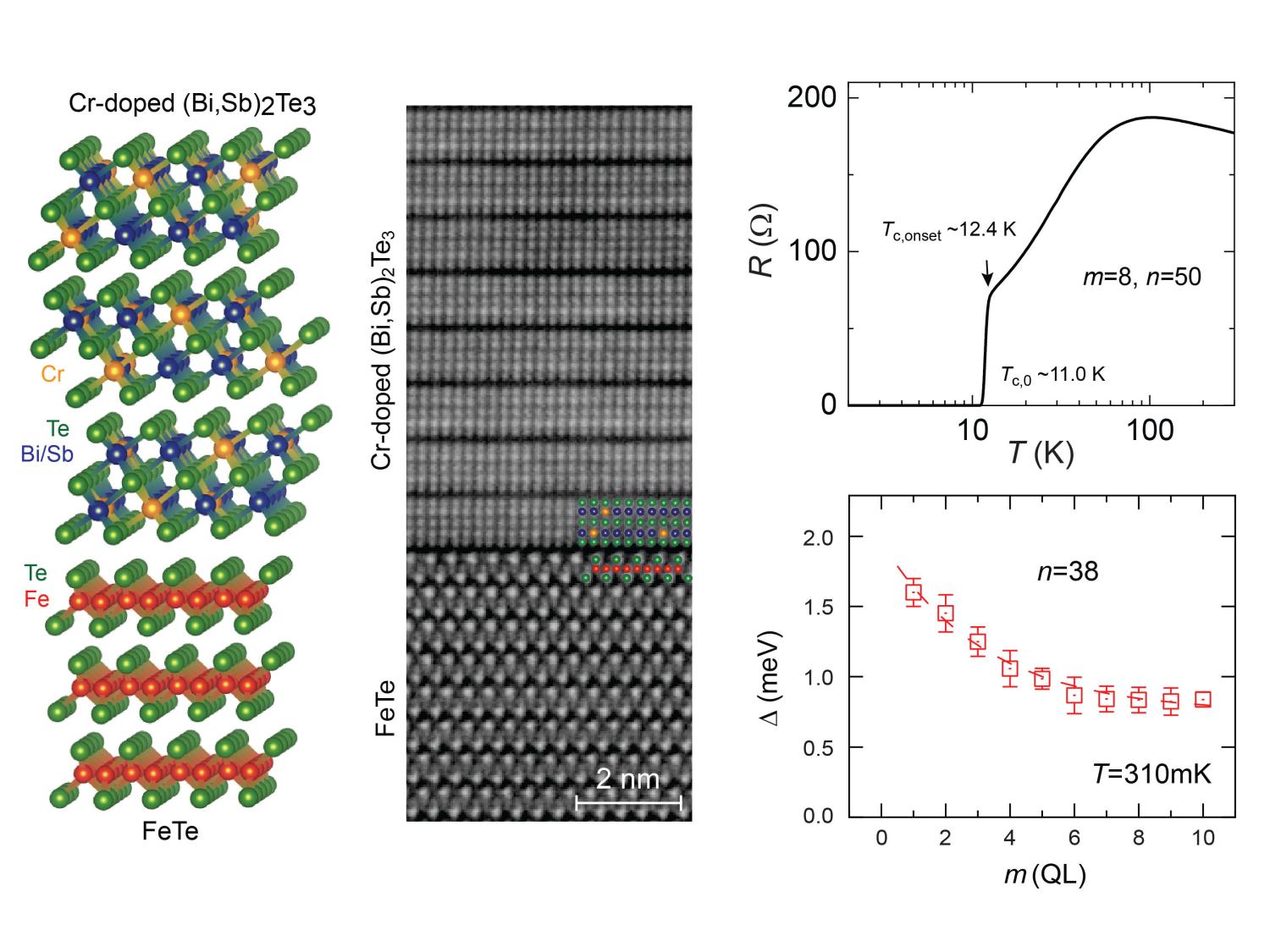2024-02-08 ペンシルベニア州立大学(PennState)
 A team led by Penn State researchers has demonstrated superconductivity at the interface between the fusion of two magnetic materials, a ferromagnet (Cr-doped (Bi, Sb)2Te) and an antiferromagnet (FeTe). The system has all the components required for unique type of superconductivity called chiral topological superconductivity, which could provide the basis for more robust quantum computing. Left: Schematic lattice structure and cross-sectional STEM image. Right: R-T curve (top) and superconductivity gap (bottom). Credit: Provided by the Chang Lab / Penn State. All Rights Reserved.
A team led by Penn State researchers has demonstrated superconductivity at the interface between the fusion of two magnetic materials, a ferromagnet (Cr-doped (Bi, Sb)2Te) and an antiferromagnet (FeTe). The system has all the components required for unique type of superconductivity called chiral topological superconductivity, which could provide the basis for more robust quantum computing. Left: Schematic lattice structure and cross-sectional STEM image. Right: R-T curve (top) and superconductivity gap (bottom). Credit: Provided by the Chang Lab / Penn State. All Rights Reserved.
◆研究では、磁性トポロジカル絶縁体と鉄カルコゲナイドを組み合わせ、相互作用界面でチャイラルトポロジカル超伝導性を実現するための重要な段階を説明しています。
<関連情報>
- https://www.psu.edu/news/eberly-college-science/story/combining-materials-may-support-unique-superconductivity-quantum/
- https://www.science.org/doi/10.1126/science.adk1270
磁性トポロジカル絶縁体における界面誘起超伝導 Interface-induced superconductivity in magnetic topological insulators
HEMIAN YI, YI-FAN ZHAO, YING-TING CHAN, JIAQI CAI , […], AND CUI-ZU CHANG
Science Published:8 Feb 2024
DOI:https://doi.org/10.1126/science.adk1270
Editor’s summary
One of the recipes for realizing topological superconductivity calls for interfacing a topological insulator with a superconductor. In a variant of that approach, Yi et al. grew a heterostructure consisting of layers of a magnetic topological insulator, (Bi,Sb)2Te3 doped with chromium, and antiferromagnetic iron telluride. Neither of these materials is superconducting, but iron telluride is a parent compound for a family of iron-based superconductors. Interfacing the layers led to the appearance of superconductivity in the presence of ferromagnetism and topological band structure. This combination of properties makes the heterostructure a promising, although not yet proven, platform for observing chiral topological superconductivity. —Jelena Stajic
Abstract
The interface between two different materials can show unexpected quantum phenomena. In this study, we used molecular beam epitaxy to synthesize heterostructures formed by stacking together two magnetic materials, a ferromagnetic topological insulator (TI) and an antiferromagnetic iron chalcogenide (FeTe). We observed emergent interface-induced superconductivity in these heterostructures and demonstrated the co-occurrence of superconductivity, ferromagnetism, and topological band structure in the magnetic TI layer—the three essential ingredients of chiral topological superconductivity (TSC). The unusual coexistence of ferromagnetism and superconductivity is accompanied by a high upper critical magnetic field that exceeds the Pauli paramagnetic limit for conventional superconductors at low temperatures. These magnetic TI/FeTe heterostructures with robust superconductivity and atomically sharp interfaces provide an ideal wafer-scale platform for the exploration of chiral TSC and Majorana physics.



